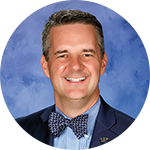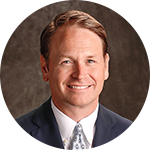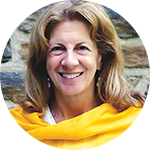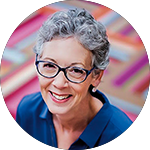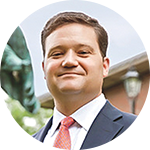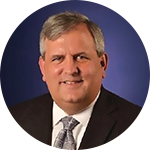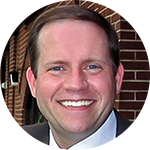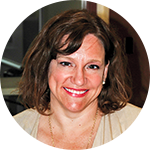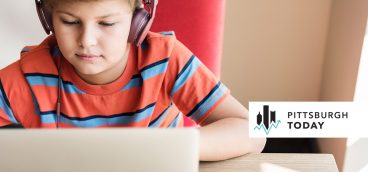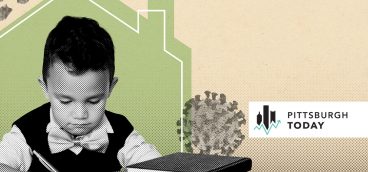
We asked the leaders of numerous secondary schools to describe how they’re dealing with the year ahead by answering this question: “How are you approaching the coming school year differently and what opportunities do you expect will accompany the new challenges?”
Scott D. Fech, Winchester Thurston
While every aspect of the coming school year is different, the core of what we do is still the same—we actively engage students in an inspiring learning process. Therefore, our approach, guided by our previously developed strategic design principles to Reimagine Learning and Rethink Time and Space, is also quite the same—WT has always been at the forefront of teaching and learning, taking bold approaches to imagining our future.
The opportunities for us lay in being able to test so fully our commitment to this mindset. I have been overwhelmed by the ability of our faculty, staff, students and parents to embrace this new reality. Whether in classrooms, e-learning or a hybrid model, in each division we are not only addressing the needs of our students, but also are supporting deep learning across disciplines, empowering individuals to drive their own learning, nurturing students to become active, engaged citizens, and honoring multiple perspectives.
Never could I have pictured such uncertainty with respect to the “tactical” start of a school year, and yet never have I been more certain that our community will continue the transformational work we are doing that makes WT…well, WT.
Bart Griffith, Shady Side Academy
Shady Side Academy is preparing for a school year in which we potentially will deliver instruction in various modes at different points in time, based on the evolving guidance of our government and health agencies: face-to-face instruction, a hybrid of face-to-face and distance learning, and entirely virtual instruction. What we know about this virus continues to evolve in real time, and consequently, we need to be as flexible in our approach as possible.
The most resilient, adaptive schools and organizations thrive because the adults within them learn effectively, almost all of the time and regardless of the situation. Amidst our current circumstances, with so much in flux and unsettled, it has never been more important for our teachers and administrators to be curious and explore emerging ideas in the field. This pandemic has provided an unprecedented opportunity for an industry that has largely gone unchanged over the past 100 years to reimagine itself, the learning experiences we provide and the way we care for young people.
Avi Baran Munro, Community Day School
Certainly scenario planning for the health and safety challenges resulting from the pandemic is paramount as we begin the school year. Guided by our Jewish values, we are also reaffirming our commitment to deepening our racial justice work. At Community Day School, we are blessed with a spacious campus and low student-faculty ratio that should accommodate all of our students for daily in-person learning. We also plan to provide a full virtual option for those who elect distance learning instead. Our ability to deliver on our academic mission while supporting the social-emotional needs of children last spring is a powerful testament to the flexibility, creativity, and perseverance of our staff and families. I am deeply proud of the professional growth of our faculty, the resilience of our students, and the strength of the CDS community. That said, we are distinguishing clearly between the remote instruction provided under emergency circumstances and the more robust, compelling distance learning experiences planned for this year. Even as we navigate how to function as safely as possible together in a COVID world, we are excited about the opportunities this difficult moment presents to leverage innovative new technologies and learning practices for greater impact both in the classroom and online.
Macon Finley, The Ellis School
Coronavirus has challenged all of us to reimagine our lives. The particular challenge for schools is how to provide engaging and vibrant learning for our students and maintain a strong and authentic sense of school community while safeguarding the health of our students, faculty and staff. At The Ellis School, we are tackling this challenge with the kind of creativity, flexibility, resilience and strong commitment to our students that is at the heart of Ellis. Our dedicated faculty are using everything we learned from our spring experience with remote learning to prepare multiple ways for students to access their classes. We will be prepared and eager to be on campus whenever local conditions allow it, but able to provide access from home for students when COVID-related health concerns prevent them from coming to campus or if local conditions require that we close campus again. No one would ever wish for this kind of challenge, but we are leveraging the opportunities it presents for us to crystallize our focus on the learning that is most important for our students and to strengthen our ability to experiment with new ways of teaching and learning.
Justin Zimmerman, The Linsly School
Linsly opened our 2019–20 academic year with the school theme, “Don’t limit your challenges; challenge your limits.” At that time, nobody could have predicted the challenges that all of us were going to face in 2020.
As we approach the new school year, everything is different because of the impact of COVID-19. The safety, health and well-being of our students, faculty and staff remain top priority as we approach the opening of school this fall. Our team of administrators has worked tirelessly with federal, state and local health officials to develop a re-entry plan that offers the best possible educational experience for our students under a variety of different scenarios.
While we do not know what September will bring, we do know that Linsly’s focus on individual relationships between students and teachers will remain paramount. Knowing our students—what motivates them, what challenges them, and what excites them—is the key to fostering an educational environment that will develop their passions, ignite their curiosity and keep them engaged. At Linsly, we believe with every challenge comes a unique opportunity for growth. Whether we are able to welcome students back to campus or transition to a virtual learning environment, our students and faculty are ready for the challenges that lie ahead.
Brian Hayden, PA Cyber School
PA Cyber has implemented a few subtle changes as we prepare to welcome the 2020–21 school year. As always, we offer a myriad of student activities, field trips and school events. The difference this year is that those activities will occur online instead of in person. That shift actually happened back in April when our Family Link and Regional Office teams moved to virtual field trips, workshops and camps. Since then, our students have been treated to online visits to the Design Factory with Sarah Heinz House, a virtual visit to Gettysburg, our ArtReach summer camps and so much more. In fact, we are about to have our Engineering Exploration Experience camp in conjunction with universities all across Pennsylvania. That’s the power of our virtual events; they provide outstanding opportunities for student engagement, interaction and learning without being limited by geographical locations, physical boundaries or travel requirements.
Academically, the PA Cyber faculty and staff have proven—as our tagline says—“The Learning Never Stops.” Our efforts to educate our students have and will continue right through this pandemic. With a 20-year heritage of quality and tuition-free online education, our team is committed to student success.
Christopher Brueningsen, The Kiski School
As we start the 2020–21 school year, Kiski will be focused on two major issues. Both represent certain challenges but offer new opportunities for growth.
The first is reopening school while keeping all members of our community safe from COVID-19. Early in our recovery planning, we recognized that some of our boarding students wouldn’t be able to return to campus for the start of school. Aiming to keep all our students engaged and enrolled until, over time, they’ll all be back at Kiski, we developed a single integrated program that allows both in-person and online learning to happen simultaneously and seamlessly. The program, called ONE Kiski, has provided maximum flexibility for each family to make a decision about what learning platform is right for their son.
The second major issue we’re focused on is diversity and inclusion. The first step in addressing racial inequity is to acknowledge it is a problem that affects all of our schools. Kiski recently published a new strategy which includes initiatives related to promoting and sustaining an inclusive school culture and redesigning elements of our curriculum to feature more topics related to race and equity. We are committed to prioritizing anti-racism at Kiski, recognizing that true allyship must happen in order to genuinely stand in solidarity with those who are excluded and marginalized.
Jessica Webster, Campus Laboratory School of Carlow University
All new challenges are opportunities for growth, and the upcoming school year will be no exception. This pandemic challenges all educators to reflect upon what elements are essential to school life and what pieces must take center stage during a time of uncertainty. The focus must be on teaching with intention. Regardless of virtual or in-person instructional delivery models, CLS is committed to maintaining a strong sense of community and connection with our students. We strive to ensure our Campus Laboratory School is a place where students feel valued, connected, supported, intellectually challenged and creatively inspired.
Our personalized approach to education and small class sizes provide a distinct advantage when designing safety plans. Our classroom layouts and flexible furnishings provide ample space to ensure students can maintain social distancing while indoors. We are repurposing larger instructional spaces to provide additional classrooms when needed. We are incredibly blessed to be part of a larger university campus with beautiful outdoor spaces. Weather permitting, students will be provided opportunities to learn, exercise and socialize outdoors in small groups daily. Our goal this fall is to reimagine how we can better utilize university spaces to create unique outdoor learning classrooms and maximize outdoor time for students.
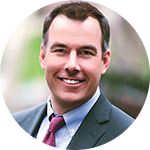
Chad Barnett, St. Edmund’s Academy
When the novel coronavirus became a global pandemic, the faculty and staff at St. Edmund’s Academy recognized immediately our ethical obligation not only to continue our students’ academic education, but to protect their social and emotional well-being. The long days and late nights this past spring collaborating to create SEA@Home were fueled by the realization that our school’s families needed us to rise to the occasion and that history awaited our response.
St. Edmund’s Academy’s effectiveness online and in person starts with the power of small. Our small community ensures that every child is known and cherished whether learning at home or on campus. Our student body’s size allows us to flexibly accommodate families’ needs. Our accessibility as teachers and administrators empowers us to fully understand individual children’s needs.
The 2020–21 school year will introduce novel challenges, and while some new tools may be necessary to solve them, St. Edmund’s Academy’s six familiar core values will guide our way. By respecting the needs of others and understanding their differences, we will provide responsive service to children and families. An honest assessment of the challenges we face will align teachers and families in an ethic of care as we cultivate each child’s personal and collective responsibility to pursue high standards.

